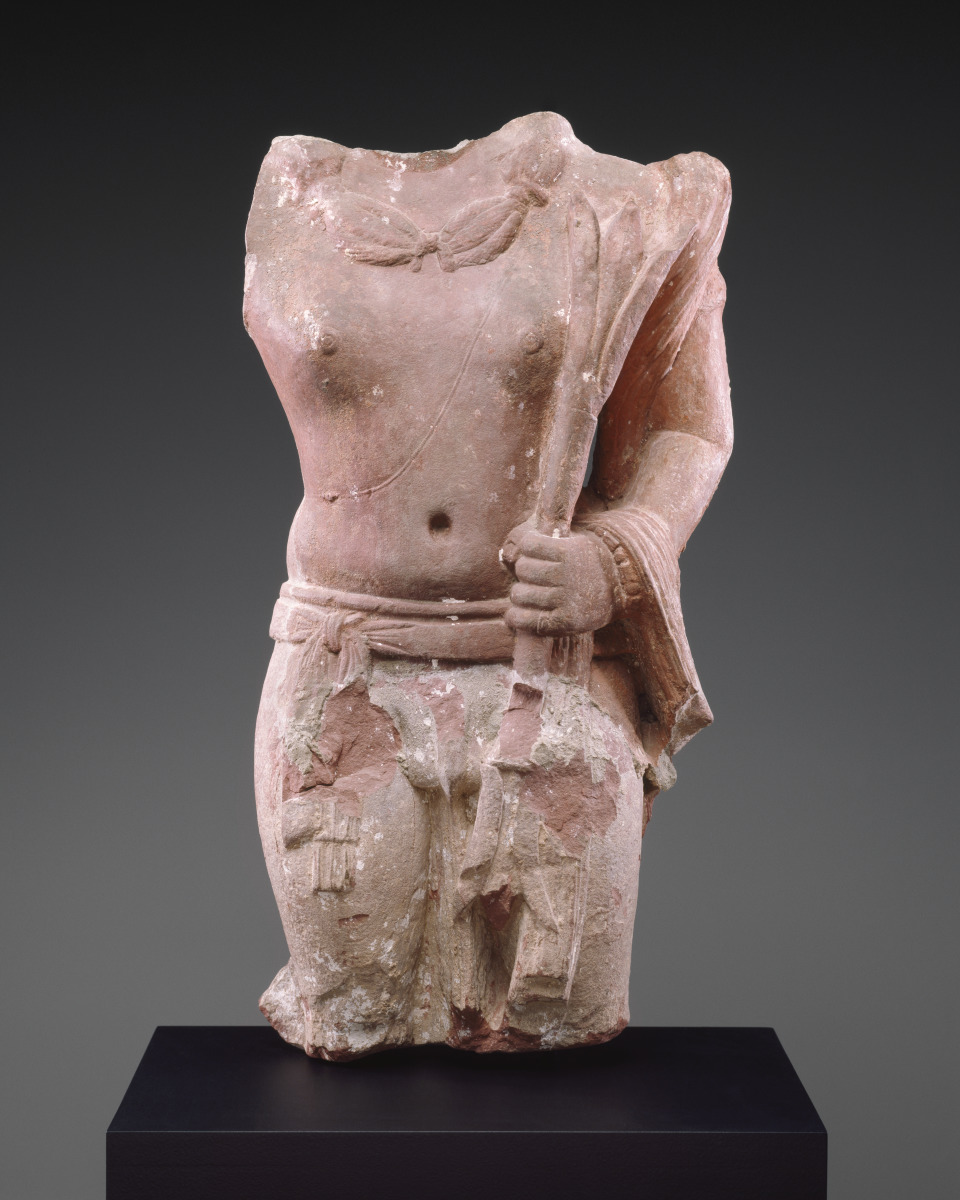
Torso of Indra or Vajrapani (Primary Title)
Unknown (Artist)
This fragmentary sculpture exemplifies the solidity, weight, and expansive volume characteristic of Kushan-period sculpture from Mathura. Despite the sandstone slab's thinness, the sculptor created a sense of inner breath and expansive volume through the swelling chest and soft modeling of the stomach. This figure is difficult to identify, but the three-pronged staff held firmly in his left hand seems to be a vajra, or thunderbolt weapon. This attribute suggests that he is either the ancientVedic god Indra or the Buddhist guardian deity Vajrapani. Though the figure is worked on the back, the shallowness of the carving suggests that it probably was set up against a shrine wall or within a niche.
Kushan period
Nasli and Alice Heeramaneck Collection, Gift of Paul Mellon
Image released via Creative Commons CC-BY-NC
Some object records are not complete and do not reflect VMFA's full and current knowledge. VMFA makes routine updates as records are reviewed and enhanced.

